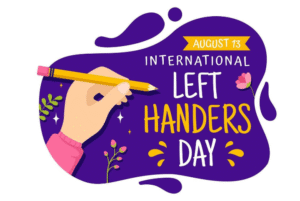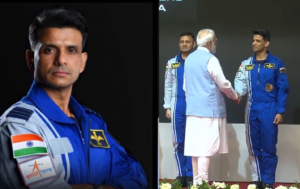Mock Drills for War time Emergencies: Saving Lives During Air Attacks and Military Strikes
Upcoming Nationwide Mock Drill – 7th May 2025
In a major step towards strengthening national security and disaster preparedness, the Ministry of Home Affairs (MHA) has directed all states to conduct a comprehensive civil defense mock drill on 7th May 2025. According to official sources, this drill aims to enhance civilian safety during wartime emergencies such as missile strikes, air raids, and enemy invasions. The primary objective is to ensure that in case of any attack, civilians are not only aware but also capable of responding swiftly and effectively.
As part of the drill:
1. Air Raid Warning Siren Activation
The mock drill will begin with the sounding of an air raid warning siren, signaling the possibility of an incoming aerial attack. This siren serves as an early warning for citizens to immediately seek shelter. Participants will be trained to recognize different types of sirens—such as alert, attack, and all-clear—and react accordingly without panic.
2. Civil Defense Training for Civilians and Students
Special training sessions will be organized in schools, colleges, public offices, and residential areas to educate civilians on civil defense techniques. This includes how to protect oneself during air raids, avoid exposure to debris, and assist others during emergencies. Such training builds a strong foundation of community resilience.
3. Crash Blackout Simulation
A critical aspect of the drill involves the implementation of a crash blackout—a complete shutdown of lights in homes, streets, and buildings. This is practiced to reduce visibility for enemy aircraft during night raids. Citizens will be instructed on how to safely darken their premises and maintain silence during such events.
4. Concealment of Critical Infrastructure
To simulate wartime protocols, strategies will be demonstrated to quickly conceal important installations, such as factories, power plants, and communication hubs. Participants will learn how these facilities are camouflaged or shielded from enemy surveillance to minimize potential destruction.
5. Evacuation Plan Execution
The drill will also test and explain a comprehensive evacuation plan, guiding citizens on how to safely move from high-risk zones to pre-identified shelters. The public will rehearse movement routes, transport coordination, and emergency checklists to ensure readiness in real conflict scenarios.
Types of Mock Drills
1. Fire Drill
Simulates building evacuation in case of fire. It trains individuals on using extinguishers, reaching exits quickly, and preventing fire-related injuries.
2. Earthquake Drill
Teaches the “Drop, Cover, and Hold On” technique, how to evacuate shaking buildings, and assemble at open safety zones, reducing injuries from falling objects.
3. Chemical Spill Drill
Focuses on how to react to hazardous material leaks—evacuating, wearing protective gear, and informing response teams—especially in industrial zones.
4. Bomb Threat Drill
Prepares institutions and public spaces to handle suspicious objects or threat calls. It involves alerting authorities, evacuation, and maintaining public order.
5. Nuclear Attack Drill
Simulates a nuclear emergency, guiding citizens to radiation shelters, using iodine tablets (where applicable), and avoiding contaminated areas.
6. Medical Emergency Drill
Prepares healthcare facilities and the public for mass casualty scenarios. It includes triage, emergency treatment, and coordination with ambulances and hospitals.
We earnestly appeal to all citizens to participate wholeheartedly in this drill. Your involvement could not only help save your own life but also the lives of those around you. Take this opportunity to learn, prepare, and support our nation’s effort to stay resilient in times of crisis. This isn’t just an exercise—it’s an act of responsibility and unity for the safety of every Indian.
War may seem distant to many civilians, but in today’s geopolitical climate, no country can afford to ignore the importance of emergency preparedness. Among the most critical forms of preparation are mock drills for wartime emergencies, especially those simulating air attacks, missile strikes, or military invasions. These drills not only save lives but also instill discipline and awareness among the local population.
In countries like Ukraine, Israel, and South Korea, such drills are a routine part of national preparedness. In India, it’s time we recognize the value of these practices and implement them with urgency and consistency.
What Is a Wartime Emergency Mock Drill?
A wartime emergency mock drill is a simulated exercise organized to train civilians and responders on how to act during real attacks such as:
- Air raids by fighter jets
- Missile or bomb attacks
- Ground invasions by enemy forces
- Nuclear or chemical warfare
These drills involve alarms, evacuation, shelter-in-place protocols, first-aid response, and coordination with emergency services such as the army, police, civil defense, and fire departments.
Why Wartime Drills Are Necessary in India
- High-Risk Borders: India’s proximity to volatile borders like Pakistan and China makes such preparedness essential.
- Dense Population: Cities are high-risk zones during attacks; timely evacuation can prevent mass casualties.
- Lack of Awareness: Most civilians are unaware of emergency protocols, making drills essential for education.
- Government Duty: According to the Disaster Management Act 2005, it is the government’s responsibility to prepare for all forms of disasters, including war.
How Local Public Can Save Their Lives
During a wartime emergency such as an air attack or missile strike, civilians should follow a strict set of guidelines:
Before the Attack:
- Attend local mock drills regularly.
- Identify nearest bomb shelters or secure basements.
- Keep emergency kits with essentials like water, first-aid, flashlight, dry food, radio, and ID documents.
- Know the sound of sirens and their meaning (e.g., alert, all clear).
During the Attack:
- Do not panic.
- Immediately take shelter in the designated bunker or basement.
- Switch off lights, close doors and windows to avoid exposure to blasts or chemical contamination.
- Stay away from windows and large glass panes.
- Listen to the radio or official app for updates and instructions.
After the Attack:
- Wait for the ‘all clear’ siren or official communication.
- Help injured persons using basic first aid, but do not move critically injured unless necessary.
- Report suspicious objects or persons to local authorities.
- Do not spread rumors or misinformation.
Government’s Role in Organizing Mock Drills
The Ministry of Home Affairs (MHA) and National Disaster Management Authority (NDMA) should:
- Conduct quarterly or biannual war emergency drills in high-risk areas.
- Involve schools, residential societies, industries, and hospitals.
- Use mobile alerts, sirens, and PA systems to simulate real-time attacks.
- Distribute educational material and survival kits.
- Train community volunteers as civil defense personnel.
International Examples of Effective Mock Drills
Israel – Home Front Command Drills
Israel conducts nationwide “Home Front Preparedness Week” annually, simulating missile strikes, including chemical weapon attacks. Civilians are trained to reach shelters within 90 seconds of a siren.
South Korea – Civil Defense Drills
In Seoul, people participate in monthly civil defense drills. Traffic halts, businesses pause, and people practice seeking shelter against hypothetical air raids from North Korea.
Ukraine – Wartime Survival Training
Since 2022, Ukrainian cities have implemented regular air raid shelter drills, often amid ongoing conflict, educating civilians on real-time responses.
Data and Reports
- Israel: Over 70% of citizens participate in drills annually (Home Front Command, 2022).
- South Korea: Monthly drills have over 60% participation rate (Korean Civil Defense HQ).
- India: NDMA reported only 18% awareness among urban populations about wartime protocols (2021 survey).
The Hidden Cost of War
While war may sometimes be inevitable to defend a nation’s dignity, sovereignty, and the safety of its citizens, its side effects are devastating—especially for developing countries like India. Wars lead to massive destruction of infrastructure, disrupt trade, increase inflation, and divert resources from development to defense. The economy can suffer a setback of more than 10 years, pushing millions into poverty, delaying crucial public projects, and increasing national debt. However, when a nation is repeatedly threatened by cross-border terrorism, as India is by certain elements from neighboring countries, it becomes essential to act firmly. Eliminating terrorism is not only about national security but also about safeguarding the lives, dreams, and dignity of every citizen.
Conclusion
War is unpredictable, but preparedness isn’t. Mock drills are not just a government formality — they are life-saving rehearsals for the unthinkable. Involving the public in such exercises builds resilience, awareness, and unity in times of crisis.
Share this content:











Post Comment